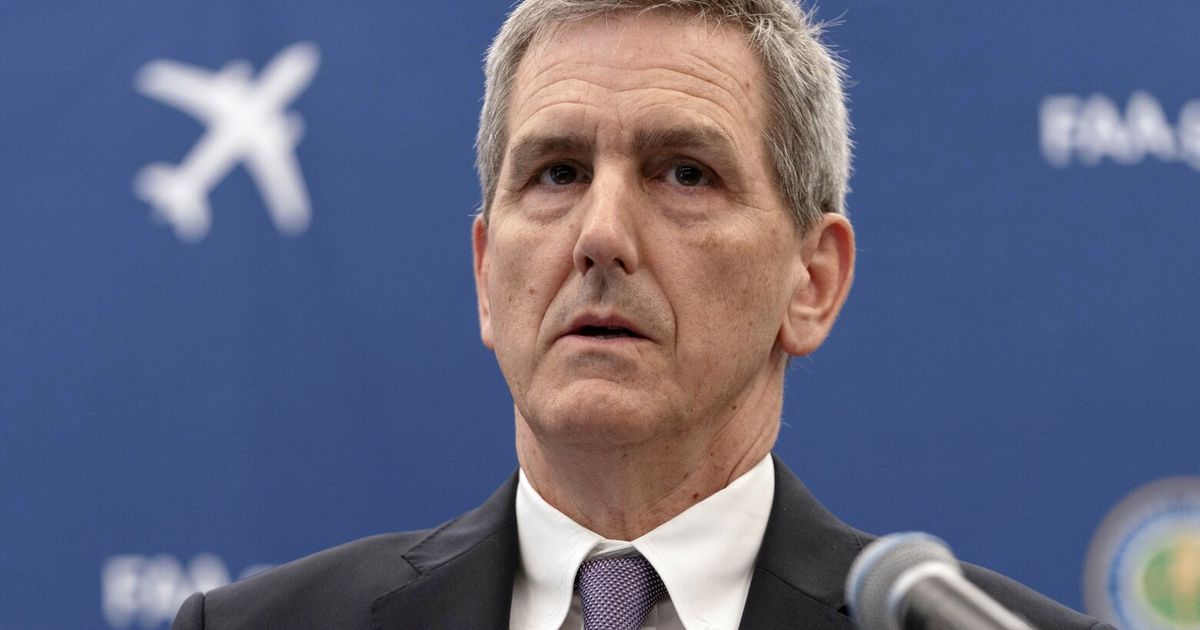Mike Whitaker, head of the Federal Aviation Administration, said Thursday his agency’s newly hands-on oversight of Boeing will ensure air travel is safe, even though the jet-maker’s shift toward an adequate safety culture will take considerable time.
“It’s the beginning of a long journey. There must be a fundamental shift in the company’s safety culture in order to holistically address its quality and safety challenges,” Whitaker said at a U.S. Senate commerce committee hearing. “There’s a lot of work to be done.”
Until Boeing gets there, he said FAA inspectors working inside the factories of Boeing and its suppliers will monitor airplane production closely.
After the shocking midair blowout of a Boeing 737 MAX fuselage panel on an Alaska Airlines flight in January, the FAA initially deployed two dozen inspectors to Boeing’s MAX final assembly plant in Renton and the fuselage assembly plant in Wichita, Kan., operated by supplier Spirit AeroSystems.
These were inspectors with decades of experience, he said, “a very senior team.”
Whitaker said there are now more than 30 inspectors on-site at Boeing and Spirit and the FAA is hiring with a target of putting 55 inspectors in place.
He added the FAA is putting its “best people on this. It’s certainly the most important issue that we’re dealing with right now.”
“Air travel continues to be the safest way of travel by a very, very large margin,” Whitaker said. “We’re going to keep it that way.”
Changing how oversight is done
Whitaker, who took over as FAA administrator in October, conceded that the Alaska incident in January exposed the weakness of the agency’s prior oversight.
“The FAA’s approach was too hands-off, too focused on paperwork audits and not focused enough on inspections,” he said. “We have been too much in reactive mode, waiting for some event to occur and analyzing the events to find out what to do differently. So we’re shifting to a much more proactive approach.”
In addition to deploying the extra inspectors focused on production, Whitaker said the FAA will closely monitor the implementation of the plan Boeing submitted on May 30 to revamp its control over manufacturing quality.
This includes measures to increase the amount of training mechanics receive, and to simplify the instructions and installation protocols given, especially to new hires with limited experience in aerospace.
Whitaker said Boeing will measure employee proficiency in performing the required work.
The ultimate goal is a comprehensively implemented Safety Management System encompassing both Boeing and its suppliers that highlights risk trends in advance through employee feedback.
That requires a company culture that encourages employees to speak up about safety issues without fear of retaliation from managers focused on keeping up the production pace.
Whitaker said the FAA will insist upon having a clear view of internal employee safety reports.
Sen. Ed Markey, D-Mass., urged Whitaker to ensure that Boeing directly involves its unions — the International Association of Machinists and Aerospace Workers and the Society of Professional Engineering Employees in Aerospace — in developing the safety management system.
Markey displayed some posters of internal Boeing slides from a training course outlining for managers how to deal with union organizing.
He said this exposed how Boeing “encourages managers to limit interactions between union and nonunion employees” as well as “concerted efforts to move critical Boeing safety functions away from the union stronghold in Everett.”
Markey said Boeing’s hostility to organized labor is a “direct detriment to safety.”
Sen. Maria Cantwell, D-Wash., chair of the Commerce, Science, and Transportation Committee, said “we have to get this safety right.”
“There’s lots of things to do to be competitive in aviation and grow jobs, but safety is what allows us to actually achieve that,” Cantwell said.











